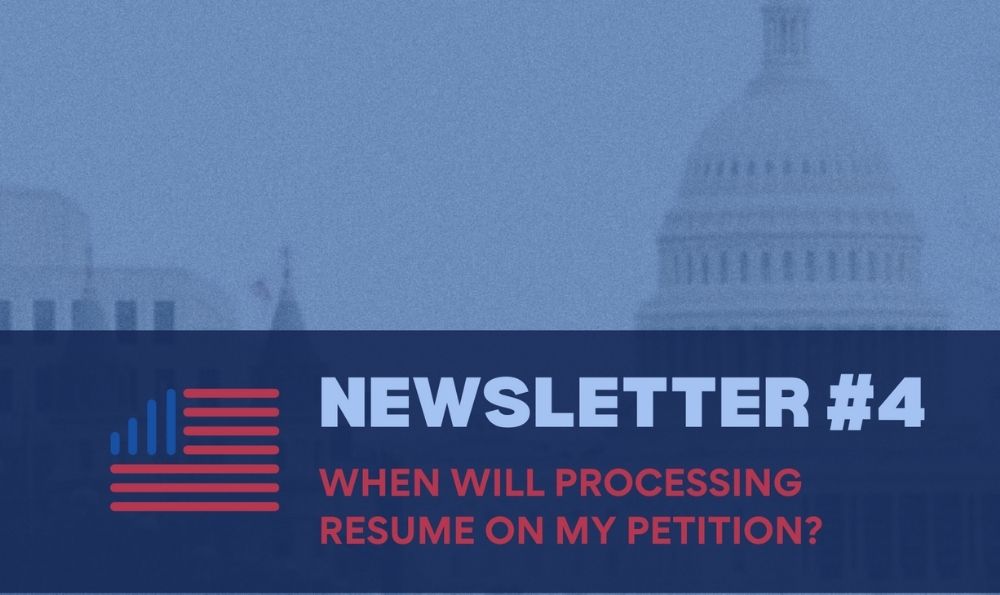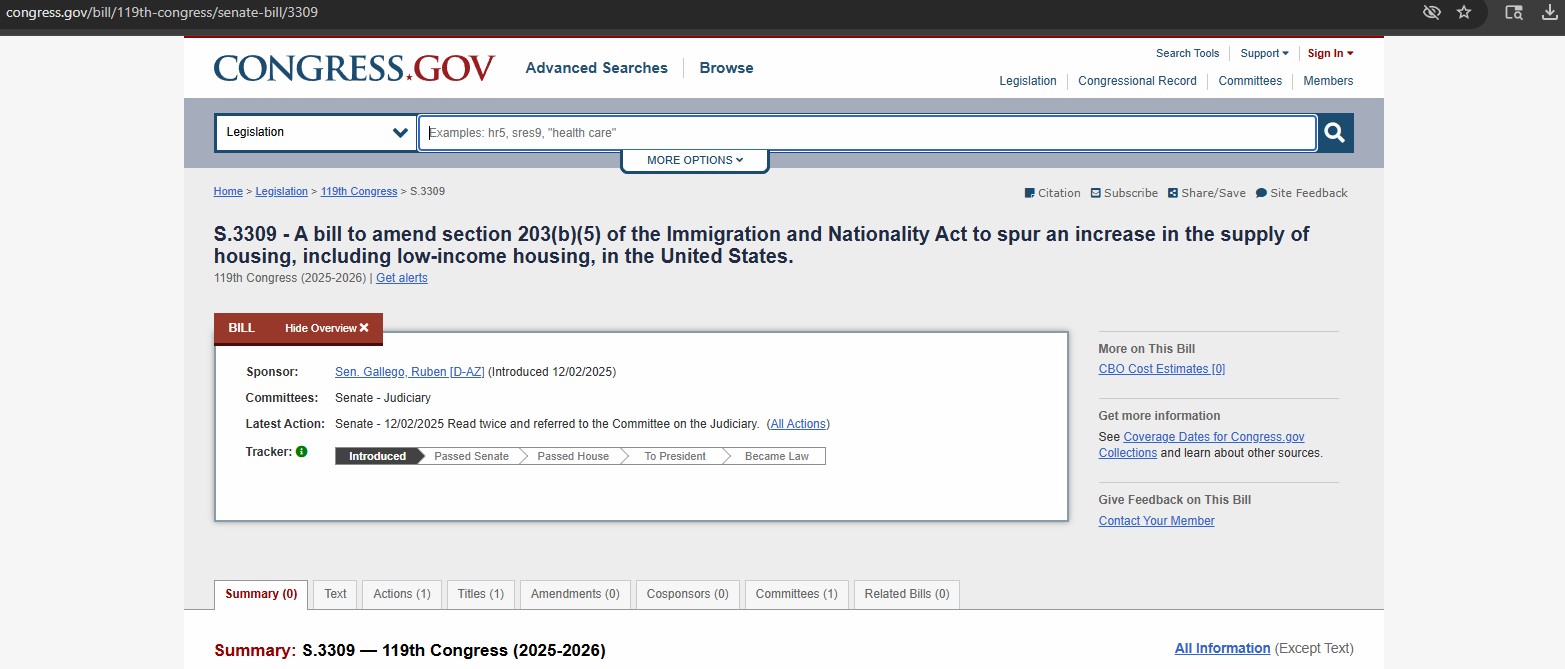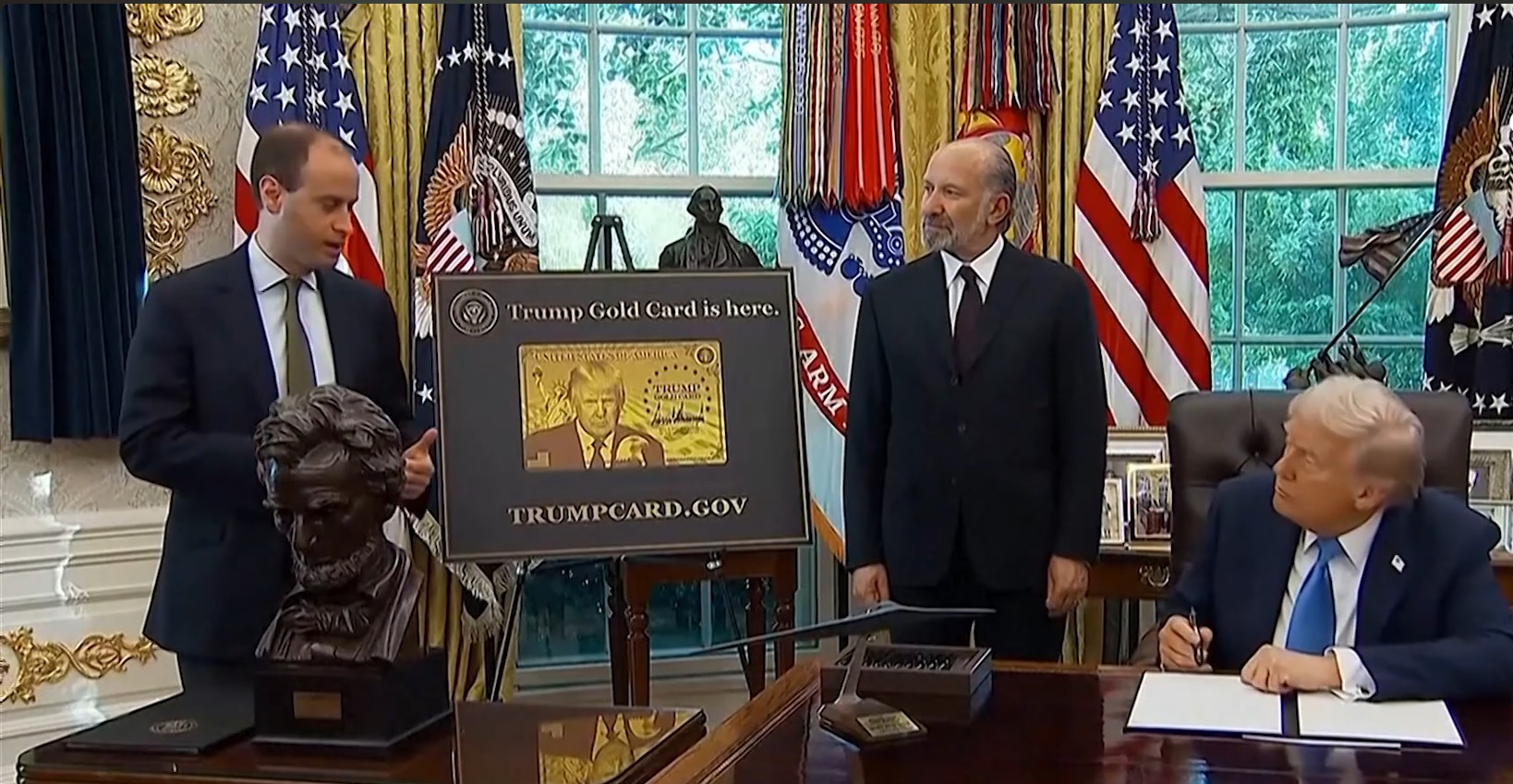Newsletter #4 – When will processing resume on my petition?
1st October, 2021
EB-5 investors are stuck in limbo due to the expiration of the Regional Center program. Their petitions are on hold and it's unclear when processing will resume. AIIA is advocating for a grandfathering bill (FIFPA) to protect existing investors. You can help by donating or sharing your story.

Today marks the 95th day of the program’s lapse. Despite various industry voices promising program reauthorization by late September, the futures of EB-5 investors and their families remain stagnant in immigration limbo. How much longer will investors suffer from this program lapse? When will the Regional Center program come back? Will it ever come back? What can we do to ensure all petitions waiting for adjudication are processed?
We know you have many questions. That is why we are publishing this special edition of our newsletter update in the form of a comprehensive FAQ.
Updates on the status of Reauthorization:
As expected, the Continuing Resolution (CR) passed by the Congress on September 30 to fund the government until December 3 did not address the Regional Center reforms or reauthorization. The reconciliation bill to enact the $3.5 trillion spending package is also not expected to address EB-5. The best chance for EB-5 reauthorization is the 2022 DHS Appropriations Bill, which will be included in the Omnibus spending bill to fund the government after the expiry of the CR.
AIIA has reviewed a copy of the bill sent by the U.S. Chamber of Commerce to the Congressional offices. While AIIA understands this may not be the final proposal, we have serious concerns about current language dealing with clauses related to grandfathering, visa set-asides and capital re-deployment.
Amidst all of this uncertainty, AIIA continues to advocate for an investor-focused solution achieved via an EB-5 reform bill or a standalone grandfathering legislation. The best way forward for investors is to help push for AIIA’s grandfathering bill, the Foreign Investor Fairness Protection Act (FIFPA), irrespective of any other legislative negotiations.
We are pleased to announce we have retained a lobbyist, whose current focus is to primarily gain support for FIFPA. While the initial lobbying efforts have been very successful, we have the financial resources to retain the lobbyist only until the end of October. As the EB-5 reform bill is likely to only be taken up in December, we need the support of our donors to continue with the lobbying efforts right until the EB-5 reform and reauthorization takes place. This is the only way that investors can take care of themselves without relying on the unpredictable nature of ongoing negotiations.
1. What are the latest developments in Congress’s reauthorization efforts?
Our industry sources and lobbyists have confirmed that the US Chamber of Commerce had facilitated a dialogue between various industry camps, including IIUSA and EB5IC, to restart negotiations on the EB-5 reform bill, which had been stalled all summer. A consensus bill language was drafted by the two groups, on which there is apparent agreement. However, there is currently no evidence that any member of Congress is championing this bill. It remains to be seen whether any or all of the wish-list provisions included in the bill language will find support in Congress and make its way into final legislation.
2. How will a prospective EB-5 reform bill be passed?
In order to maximize its chance of passage, the EB-5 reform bill must be attached to a bigger, must-pass legislation, colloquially referred to as a “legislative vehicle”
There are currently three legislative vehicles expected to be taken up by Congress through the end of the year.
Budget Reconciliation
Budget reconciliation is a process through which the Senate can pass a bill with just 51 votes instead of 60 (as it is not subject to the filibuster). This year, Democrats are trying to pass a $3.5 trillion spending package titled the “Build Back Better” package, which includes provisions on infrastructure, healthcare, immigration and many other areas, through the budget reconciliation process. Democrats have made two attempts in September to attach immigration reform provisions to budget reconciliation, but have been overruled by the Senate Parliamentarian. No EB-5 reauthorization is expected to be included in the reconciliation bill.
Continuing Resolution
The fiscal year in the United States ends on September 30, before which budget appropriations for various government agencies have to be made for the next fiscal year. These appropriations bills need 60 votes to pass in the Senate. In recent years, Congress has consistently failed to meet this deadline due to the intense polarization. In order to avoid a government shutdown, Congress would instead pass a “Continuing Resolution” (CR) before September 30, which maintains the present levels of funding with a few minor changes. Since the EB-5 reform bill involves extensive legislative changes, it is not expected to be attached to a CR. EB-5 Regional Center reauthorization was not included in the proposed CR language released by the Democrats or the Republicans, and it is not in the versions of H.R. 5302 that passed the House on 9/21 and the Senate on 9/30. Note that Congress can pass as many CRs as it needs to keep the government funded until an agreement on the Omnibus appropriations bill has been reached. H.R. 5302 funds the government through December 3, 2021.
The Omnibus
Once Congress reaches an agreement on the annual budget, several separate appropriations bills are taken up for consideration simultaneously in a vehicle known as the ‘Omnibus’. Funding for the Department of Homeland Security (DHS) is included in the DHS Appropriations Bill, which is part of the larger budget omnibus. The 2022 DHS Appropriations Bill is the most likely vehicle to carry a potential EB-5 reform bill or FIFPA. While it is not yet known when the DHS Appropriations bill will be taken up for consideration, the most likely date is on or around December 3, 2021. However, it is also possible that Congress passes multiple CRs to keep the government funded beyond December 3, in which case the EB-5 program lapse might extend into the new calendar year.
3. Has AIIA seen a copy of the reported “consensus” EB-5 reform bill?
We have reviewed one copy of an EB-5 reform bill that was sent by the US Chamber of Commerce to Congressional offices. The language carried in the “EB-5 Reform and Job Creation Act” comprehensively reforms the EB-5 program and is currently being circulated on the Hill. However, we do not yet see any evidence of a sense of urgency in Congress to push this bill forward.
4. Anything noteworthy in the new proposed language for an EB-5 reform bill?
AIIA understands that the copy of the industry bill that we reviewed is likely not a final proposal, but is still concerned about outstanding issues which must be addressed. AIIA urges particular attention to provisions which negatively impact existing EB-5 investors:
Grandfathering
The bill that AIIA reviewed had only the following language regarding grandfathering pre-lapse investors into the newly reauthorized program:
PROTECTION FROM EXPIRING LEGISLATION – notwithstanding any other provision of the Immigration and Nationality Act, in the event that the EB-5 Regional Center Program’s authorization expires, DHS shall not suspend, or hold in abeyance, the processing of petitions for individuals that timely filed petitions under section 204(a)(1)(H) through the Regional Center program while the program remained authorized.
The underlined language is dangerously equivocal. “Shall not suspend, or hold in abeyance” only compels DHS to continue processing existing petitions. It does not preclude the option to deny existing petitions on the basis of program suspension or no longer complying with the updated language of the reauthorized program. Therefore, should this provision be interpreted less charitably for investors, this provision may compel DHS to immediately deny all existing Regional Center based applications in case of another Regional Center program expiry, defeating its very purpose to protect existing investors.
AIIA would like to ensure that the final version of the bill includes comprehensive grandfathering provisions, preferably by adopting the text of the Foreign Investor Fairness Protection Act (FIFPA), developed by AIIA with the assistance of attorney Robert C. Divine. If other grandfathering texts are sought to be adopted, AIIA would scrutinize whether they achieve the goal of comprehensive protection for existing investors.
Capital Redeployment
PARAMETERS FOR CAPITAL REDEPLOYMENT – A new commercial enterprise that has
(i) executed the business plan for a capital investment project in good faith without a material change, and
(ii) created a sufficient number of new full time positions to satisfy the job creation requirements of the program for all investors in the new commercial enterprise, either directly or indirectly, may, upon repayment by the job creating entity of all or part of the capital initially deployed in conformity with the initial investment contemplated by the business plan, for the purpose of maintaining the investors’ capital at risk, further deploy such investment funds anywhere within the United States or its territories.
The current law does not mention redeployment, which has been codified instead through the USCIS Policy Manual. This proposed language would codify redeployment policy through federal law, and give a deference to the New Commercial Enterprise (NCE) on deployment conditions and options. There is no mention of any rights given to investors over redeployment decisions concerning their capital. AIIA opposes any provision which could further dilute the minimal power of investors to decide when, where, and how their funds can be reinvested.
Visa set-asides
RESERVED VISAS FOR CERTAIN AREAS.—
(i) IN GENERAL.— Of the number of visas allocated under subparagraph (A), 30 percent shall be reserved in each fiscal year before fiscal year 2033 for qualified immigrants who invest in a new commercial enterprise that are located within a rural area, a qualified opportunity zone, or high unemployment areas defined under paragraph (T)(x)(I).
(ii) ALLOCATION OF RESERVED VISAS – The reserved visas under subparagraph (C)(i) shall be allocated in manner where 2/3 of the total number of reserved visas shall be made available for qualified immigrants who invest in rural areas, and 1/3 of the reserved visas shall be available for qualified immigrants that invest in high unemployment areas where the Job Creating Entity is in a census tract, or two census tracts, where the average unemployment rate is at least 150% of the national average unemployment rate.
(iii) UNUSED VISAS.— Notwithstanding the provisions of Section 201 of the Act, at the end of each fiscal year, any reserved visas that were unused shall remain reserved for the next fiscal year in the same category for which they were originally reserved. These unused visas shall not count against the numerical limit on the number of visas allotted for immigrants under section 203(b)(5) in any future fiscal year. If visas in a given reservation category are unused for two consecutive fiscal years, they shall then be made available to all individuals seeking status under section 203(b)(5), and if still unused, they shall be treated as if they are subject to the general requirements under Sections 201, 202, and 203 of the act.
The proponents of the reform bill are pushing for visa set-asides to be created in order to reopen the market for new EB-5 investments in Regional Centers. However, we believe that such provisions are likely to increase the wait times of existing investors by setting aside a significant share of visas, up to 30%, for new investors, leaving only 70% for the long queue of existing investors. AIIA does not support any provision which lengthens the immigration or investment timeline for existing investors. These “set aside” visas will most negatively impact the Chinese EB-5 investor community that has a significantly longer backlog compared to any other country.
5. Which legislative change is most important for EB-5 investors?
For existing investors, the single most important legislative action is grandfathering. Whatever shape or form a reform bill might take, whatever be the negotiations between industry factions, and whatever might be acceptable to the Congress, this is the single most important item that will protect investors. It is also the least controversial item that is likely to be acceptable to Congress. Hence, AIIA is singularly focused on championing FIFPA. This effort needs to continue right until the moment when the Congress enacts legislation reauthorizing the EB-5 Regional Center program, or even beyond in case the reauthorization is not permanent.
6. What is the latest on FIFPA?
We are currently building support for FIFPA in Congress and amongst the EB-5 stakeholder community. Our initial focus has been on the key players in the Senate associated with the EB-5 program. We have observed a high level of interest in our grandfathering proposal. Our next step is to identify those members who would champion this particular provision – in the Senate and the House – and lead the charge in sponsoring such legislation. Our current effort is focused on gaining wider support for FIFPA between now and December 3, when the current CR expires.
7. Is there an update on AIIA’s efforts to hire a lobbyist?
We are pleased to report that, thanks to the incredible support of donors (most of whom are EB-5 investors in various stages of the process), we have raised sufficient funds to retain the services of the Morrison Public Affairs Group (MPAG). MPAG is led by Bruce A. Morrison, former member of Congress representing Connecticut’s 3rd District, who has been personally leading our outreach efforts in Washington, D.C. Mr. Morrison is immensely experienced in immigration lobbying affairs, with a special focus on EB-5 related matters.
8. What about future fundraising goals?
Hiring a lobbyist was only half the battle. We still face the struggle of retaining the lobbyist’s services in the months ahead amidst the uncertainty surrounding the Regional Center program. Currently, our financial resources can support the lobbyist only until the end of October but, as we know, that is wholly inadequate. The battle for reauthorization and grandfathering is likely to stretch at least into December, and possibly beyond. We will continue to raise funds specifically for this effort so that we are able to lobby effectively for our objectives beyond October.
9. What else has AIIA been up to?
In our last webinar we presented investors with our progress report; updates on FIFPA, program-authorization; financial update; lobbyist update; and summed up with an informative investor Q&A session. The webinar is available on YouTube and Bilibili for anyone to watch.
Our volunteer team has been reaching out to the media and sharing their stories. We encourage folks who wish to volunteer to reach out to us by email at [email protected]. At this time, given the sensitivity of the information we are dealing with, we are only able to share volunteer opportunities and resources with verified donor-members.
AIIA was also featured in the EB-5 Investment Voice Podcast by Moha Shah & Associates. AIIA discussed a wide variety of topics including reauthorization, advocacy for FIFPA, the Alliance’s Congressional outreach, and our long-term goals.
On September 23, AIIA submitted a series of questions to the USCIS public engagement for EB-5. Our questions ranged from Regional center program sunset questions, IPO operations and staffing capacity and Processing and Policy. AIIA looks forward to engaging with USCIS on this and future stakeholder opportunities.
AIIA has also filed a landmark FOIA request with USCIS. The goal of the FOIA request is to inform AIIA members about:
- Staffing allocation at IPO on three different form types – I526, I829 and I924.
- USCIS policy and decision-making criteria on holding the pending EB-5 regional center applications in abeyance during the statutory lapse of the RC program.
- Provide visibility on pending form inventory as of Sept, 2021 organized by country of chargeability.
- USCIS processing volumes since program lapse.
The responses to the FOIA request will be available to AIIA members only. This filing is one more step AIIA has taken to put the interests of immigrant-investors first.
10. How is the industry supporting AIIA?
We would like to recognize the following EB-5 industry professionals who have stepped up to donate to our cause:
- Christian Triantaphyllis, Jackson Walker, LLP
- Irina Rostova, Rostova Westerman Law Group, P.A.
- Michael Harris, HarrisLaw, P.A.
- David Hirson, David Hirson & Partners, LLP
- Ashkan Emami, Path Law Group
- Suzanne Lazicki, Lucid Professional Writing
- Andrew Wall, Dynaxe Capital
- Ashok Kumar Adusumilli, EB5 Resources
- Jenny Zhan, Beyond International Group
- Genevieve Roman, Brevet Capital Management
- Lily Guo, American Regional Center For Entrepreneurs
A number of attorneys and news publications have also helped spread the word about us through their website blogs and email communications with their clients:
- Andy Semotiuk mentioned FIFPA in his latest Forbes article
- The Meyer Law Group mentioned AIIA and FIFPA in their latest blog post
- Miller Mayer mentioned AIIA and FIFPA in their latest blog post
- The Galati Law firm mentioned AIIA and FIFPA in their latest blog post
- EB5 Investor Magazine ran a story on the Foreign Investor Fairness Protection Act
- Article on FIFPA in the law journal ILW.com
- Julián F. Montero of Saul Ewing Arnstein & Lehr LLP introduced AIIA and ways investors can get involved in an email newsletter to EB-5 investors.
11. What can I do to help?
AIIA is a member-funded organization. We rely on your donations to make the positive impact that we all deserve. Your donation helps us achieve the following objectives:
- Having a dedicated lobbyist is the most important investment AIIA is making in shaping the immigration outcomes of thousands of EB-5 investors. We are funded up to the end of October. AIIA needs your help in order to continue funding the lobbyist.
- Fund our political consultancy expenses which gain us access to direct conversations with Congress, build earned-media presence and fund marketing campaigns.
- Professional Services expenses associated with drafting legislative text and proposals.
- Legal Services expenses to defend investor interests in key ongoing EB5 precedent-building legal arguments.
- Administrative expenses to carry out 501 (c) (4) activities.
- Website and other overhead expenses.
Additionally, we need investor stories! Our lobbying efforts are working. We need the faces of individual EB-5 investors to make a personal impact during our Congressional calls. We are currently looking for investors residing in or having invested in projects in the states of DE, HI, CT, WI, MT and GA. Send us an email on [email protected] with the Subject line “My Investor Story”.
AIIA by numbers
The AIIA community is made up of over 2,000 immigrant investors. Compared to the approximately 35,000 EB-5 immigrant investors representing roughly 80,000 individual visa petitioners, our current community has a massive potential to grow. Help spread the word about AIIA to inform others about the important work we are doing to protect their immigration and investment journeys. Reach out directly to your circle of individual investors, foreign agents, lawyers and issuers to tell them about AIIA and ask them to spread the word about us to their other clients.
12. When will processing resume on my EB-5 Regional Center petition?
This is a tough question for us to answer given the ever-changing political landscape around this topic. There are additional factors to keep in mind such as our ability to continue to fund our lobbying efforts until FIFPA is passed. As we mentioned earlier, we are aiming for the 2022 DHS appropriations bill as our vehicle to move FIFPA forward.
Bear in mind that there are three possible avenues that would jump-start your existing petitions:
- Short-term extension/reauthorization – very unlikely to happen. Our sources on the Hill tell us that there is no appetite for another short-term extension of the EB-5 program.
- Regional Center Program reform – what the industry factions are working on and is the subject of proposed EB-5 reform bill.
- Grandfathering existing investors – AIIA’s top priority. We are pushing for the Foreign Investor Fairness Protection Act (FIFPA), a one-page bill that would protect anyone with a filed I-526 from the lapse of the Regional Center program. We are actively funding lobbying efforts to get FIFPA enacted.
IIUSA has conveyed to us that they will make efforts to push FIFPA in the event it is crystal clear that Congress will no longer pursue a reauthorization of the Regional Center program and that there is no longer any traction for continued work on the reauthorization.
Related Posts

We Congratulate Senator Gallego for New Legislation that Leverages the EB-5 Program to Build Affordable Housing

We Won The EB-5 Fee Increase Lawsuit

One Year Left to Invest in a EB-5 Regional Center Project

Trump Gold Card: A New Green Card Pathway Competing with EB-5

Stay Up To Date With AIIA
Join our newsletter to stay up to date on EB-5 updates.
By subscribing you agree to with our Privacy Policy and provide consent to receive updates from our company.
Recommended Resources

The Issue of Aging Out in EB-5
The Child Status Protection Act (CSPA) helps freeze a child’s age on EB-5 petitions, but long visa backlogs still risk...
Read More
The Sale of EB-5 Securities Offerings
EB-5 securities sales often use Regulation D (U.S. investors) and Regulation S (foreign investors) exemptions to avoid SEC registration while...
Read More
Choosing between Direct vs Regional Center EB-5 financing
Direct EB-5 suits single investors creating direct jobs; Regional Center EB-5 pools multiple investors, counting direct and indirect jobs for...
Read MoreRecent Blog Posts

We Congratulate Senator Gallego for New Legislation that Leverages the EB-5 Program to Build Affordable Housing
Sen. Gallego's EB-5 bill mobilizes foreign capital to build affordable housing. This collaboration has boosted AIIA's Congressional ties & credibility...
Learn More
We Won The EB-5 Fee Increase Lawsuit
AIIA successfully won its lawsuit against USCIS’s April 2024 EB-5 fee increases, with a federal judge ruling that the agency...
Learn More
One Year Left to Invest in a EB-5 Regional Center Project
AIIA warns that EB-5 Regional Center investors will lose protection after Sept. 30, 2026 unless they file I-526E petitions before...
Learn More
Trump Gold Card: A New Green Card Pathway Competing with EB-5
Trump’s new $1M “Gold Card” visa plan competes directly with EB-5 and raises serious legal concerns, as it lacks statutory...
Learn MoreGet In Touch With Us
If you have any questions, inquiries, or collaboration proposals, please don’t hesitate to reach out to us.

Responses (0)